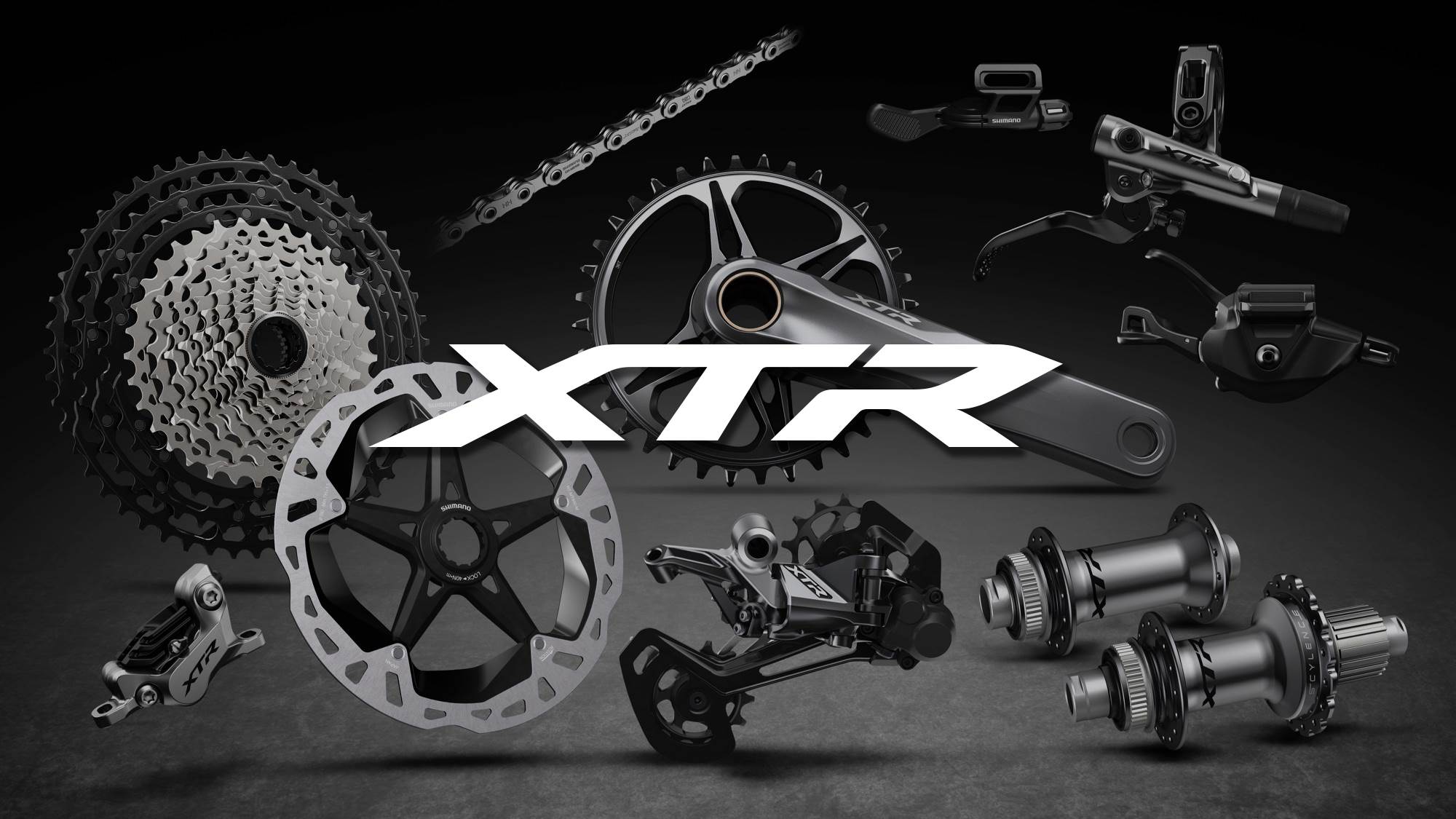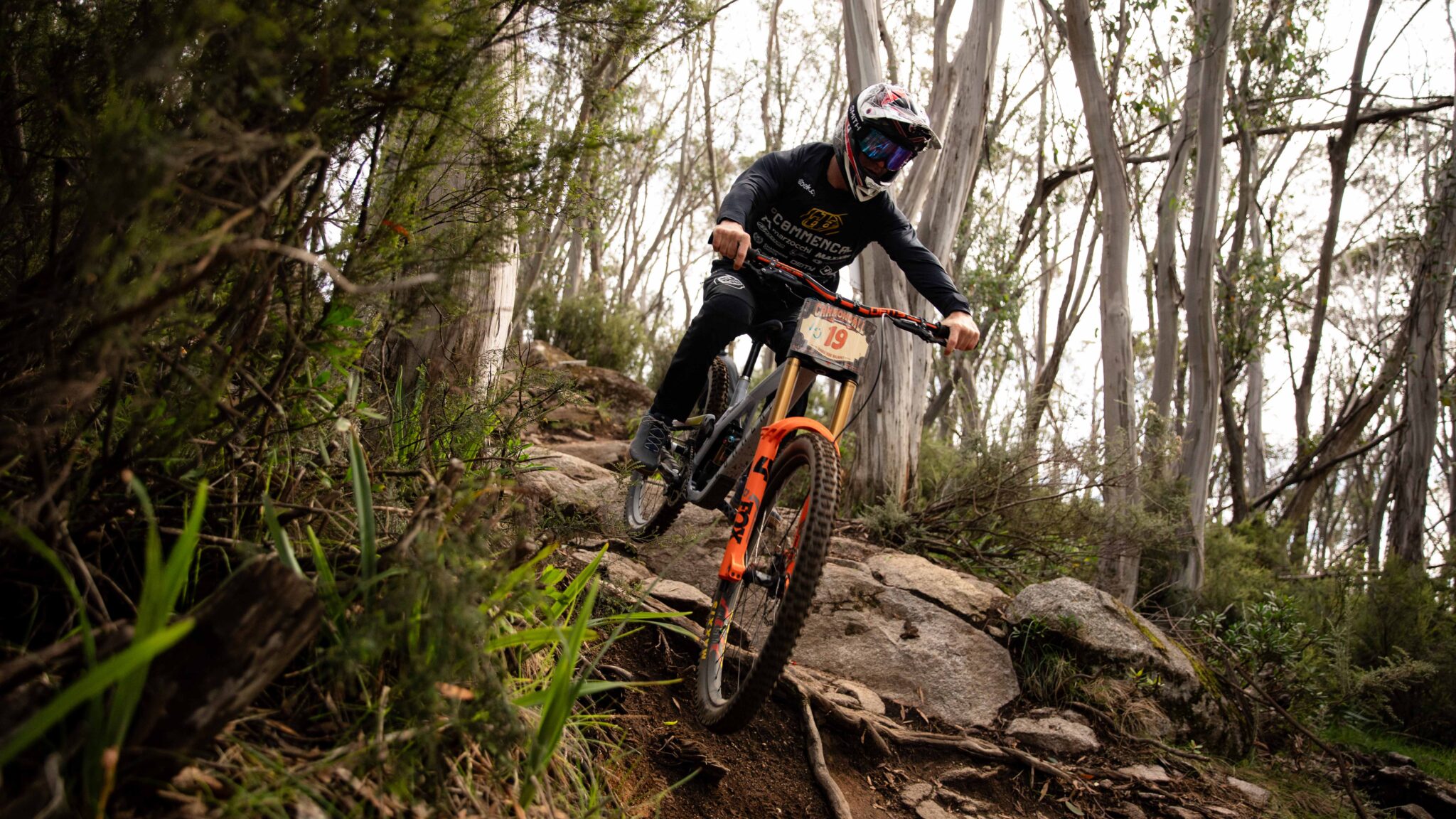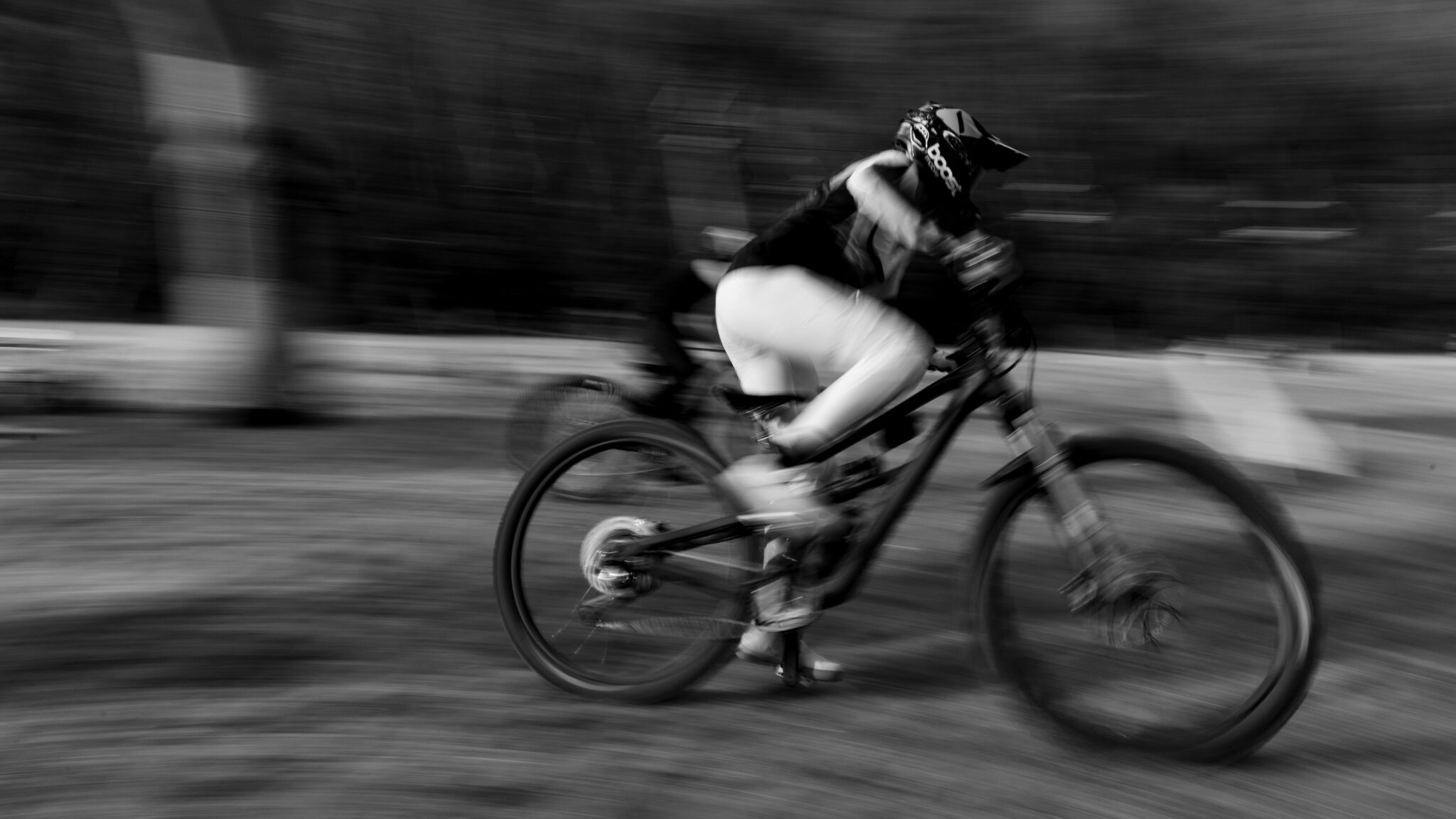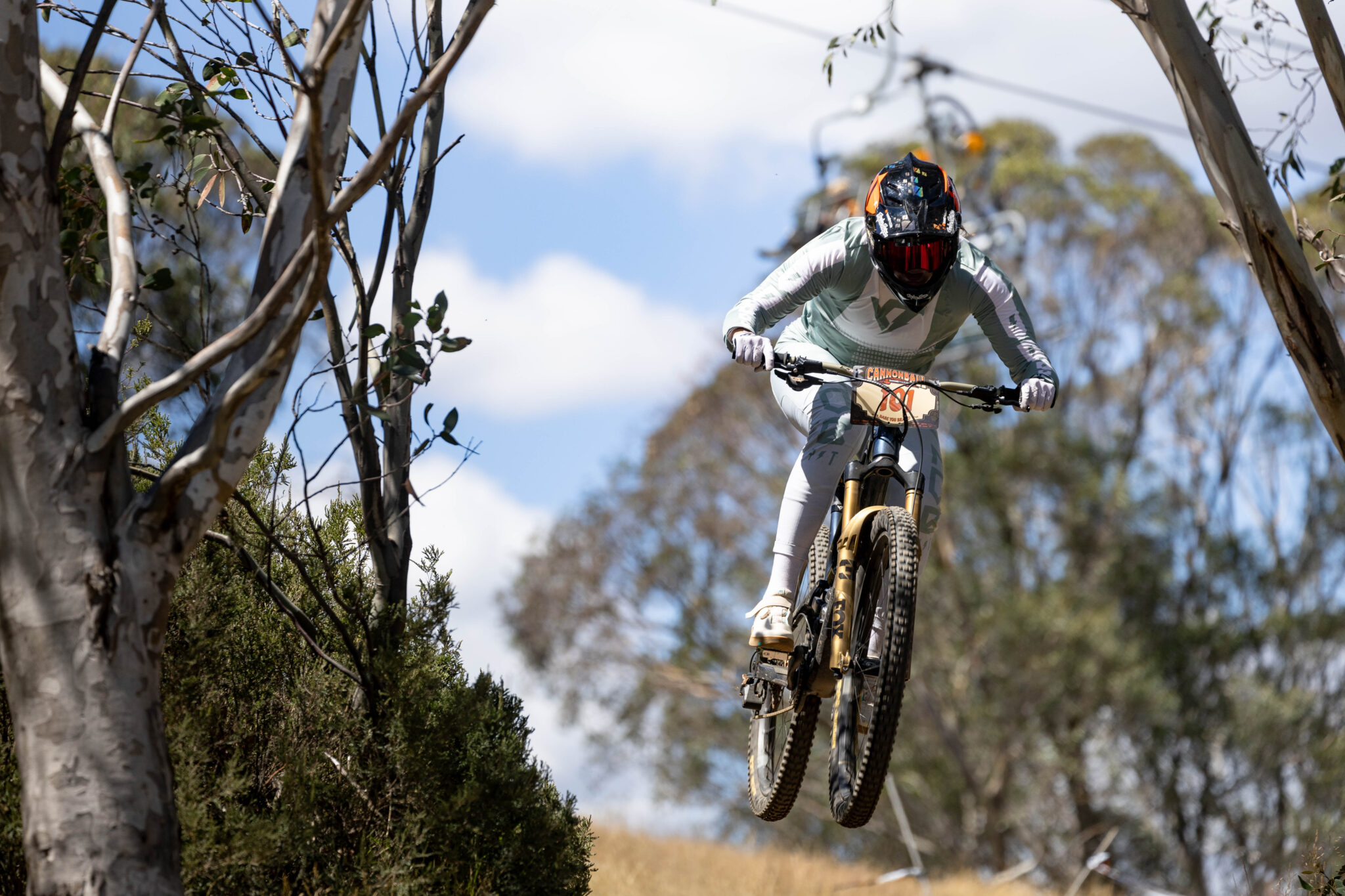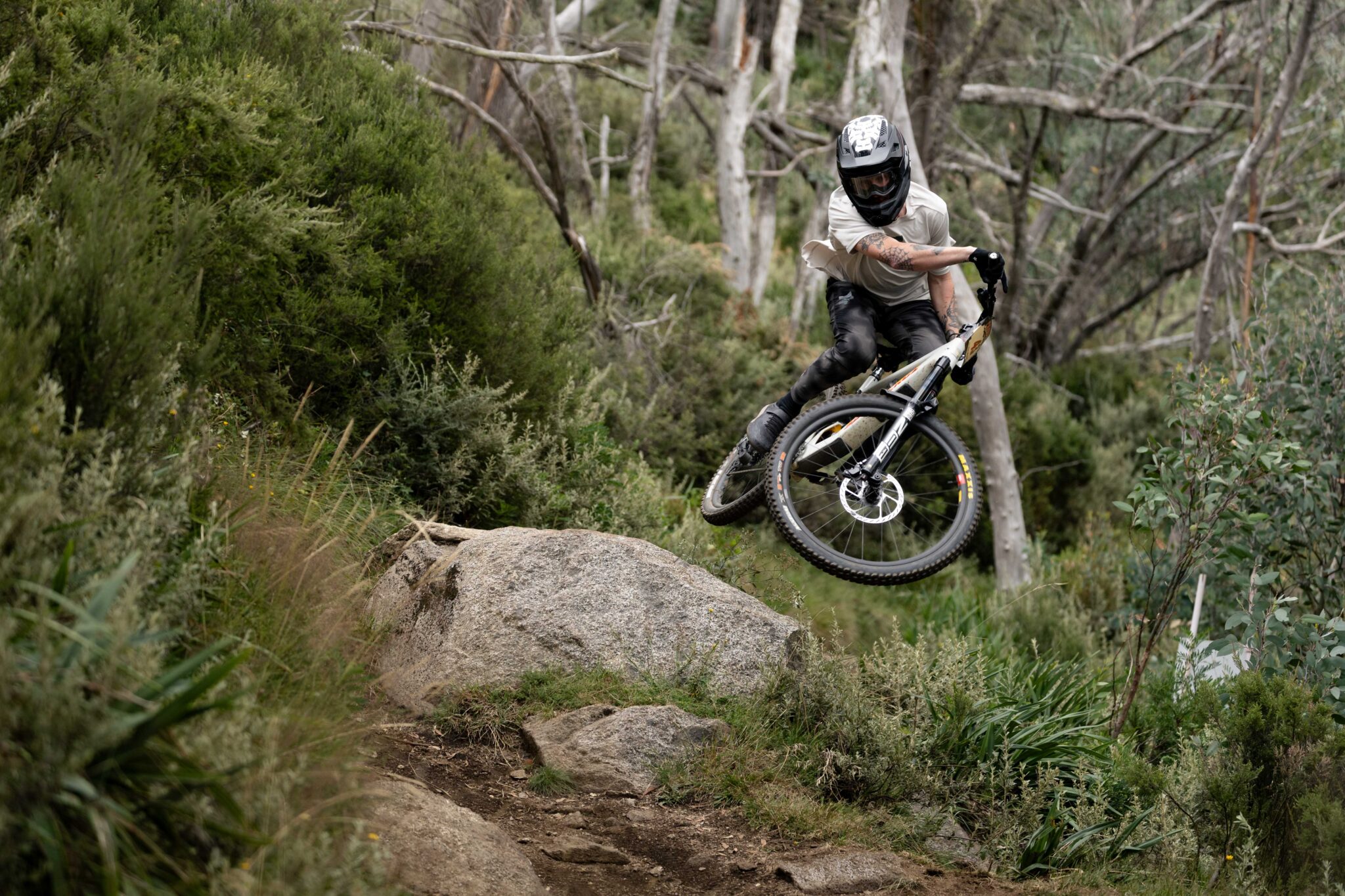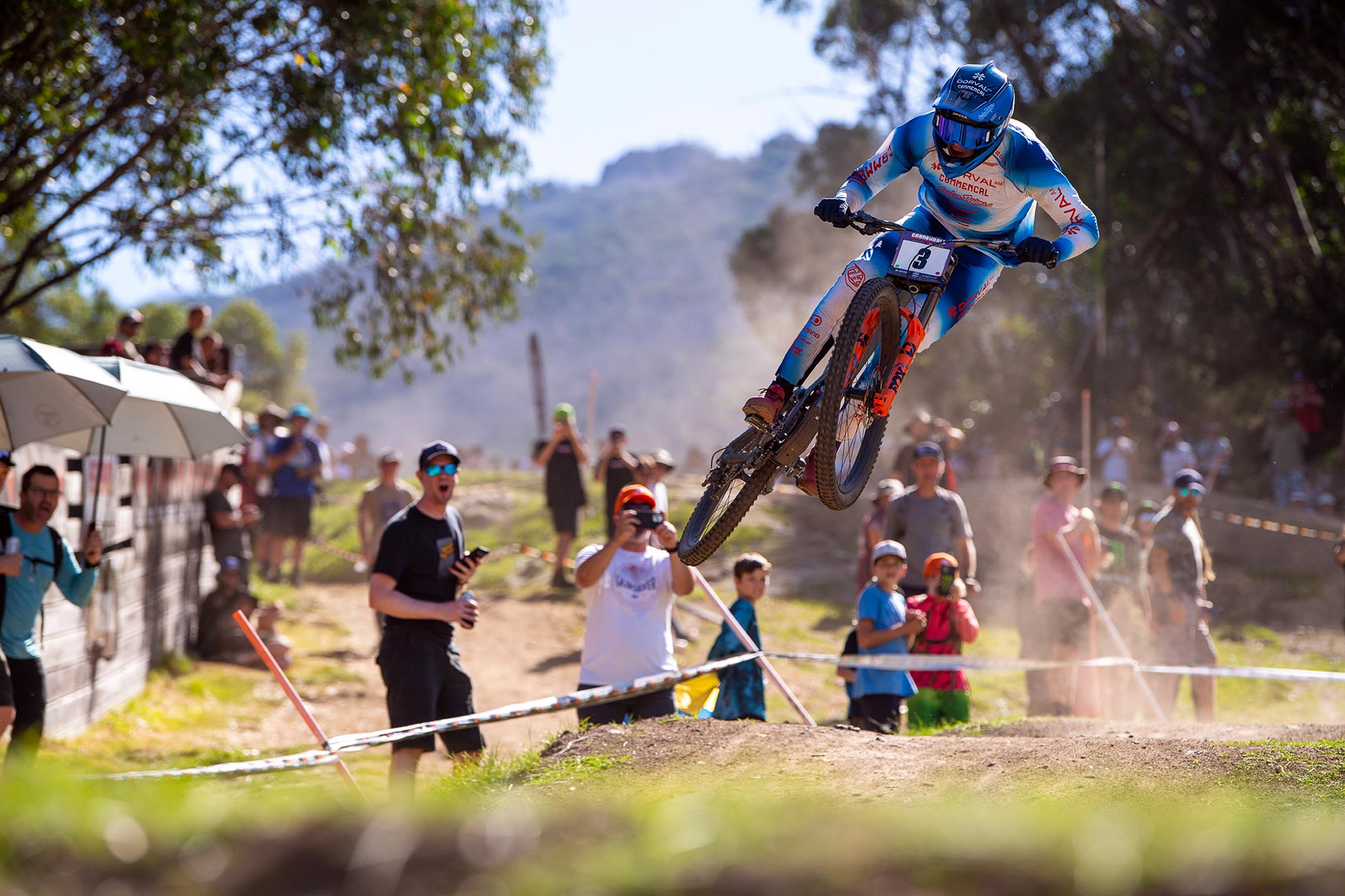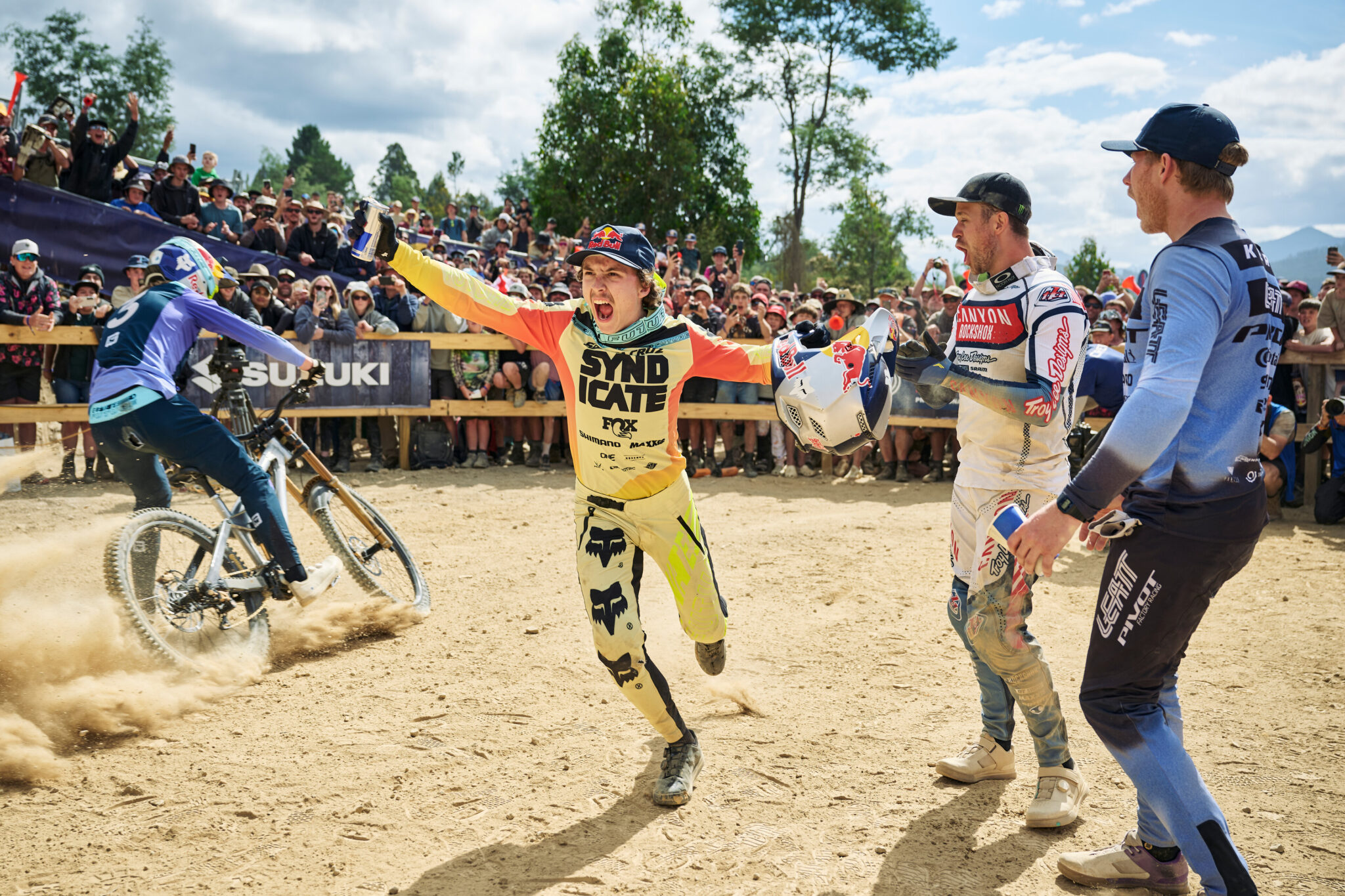Shimano lift the veil on XTR M9100
Shimano's new XTR M9100 brings the racing back to XTR with a bang, with 4 group sets aimed to bring speed, control and focus to Enduro, XCO and marathon racing.
As everyone knows, the R in XTR stands for racing. And there is nothing wrong with racing, even though mountain biking is about so much more than having a number on your bars for downhill, cross-country, marathon or enduro racing. But – racing does breed excellence and that's something Shimano has continued to support.
Shimano have been hard at work designing and testing their latest XTR group set, the M9100 group set. The thing is, it's actually four different group sets, given how we ride and race is so different. They have a group set for XCO, one for Marathon racing, and essentially two options for enduro. This is the biggest overhaul Shimano has ever done for XTR, nothing remains the same except for the brake pad for the XTR Race brakes. That's it.
So what's new then?
12 speed, a 510% gear range with a single chain ring, two cassette range options, stiffer brakes, stronger braking options, way lighter crank sets, larger chainring size options, dropper post levers, lighter, faster and silent engaging hubs, and an all-new chain, chainring and cassette profile for top-level shifting security, low shift effort and quiet drivetrains.
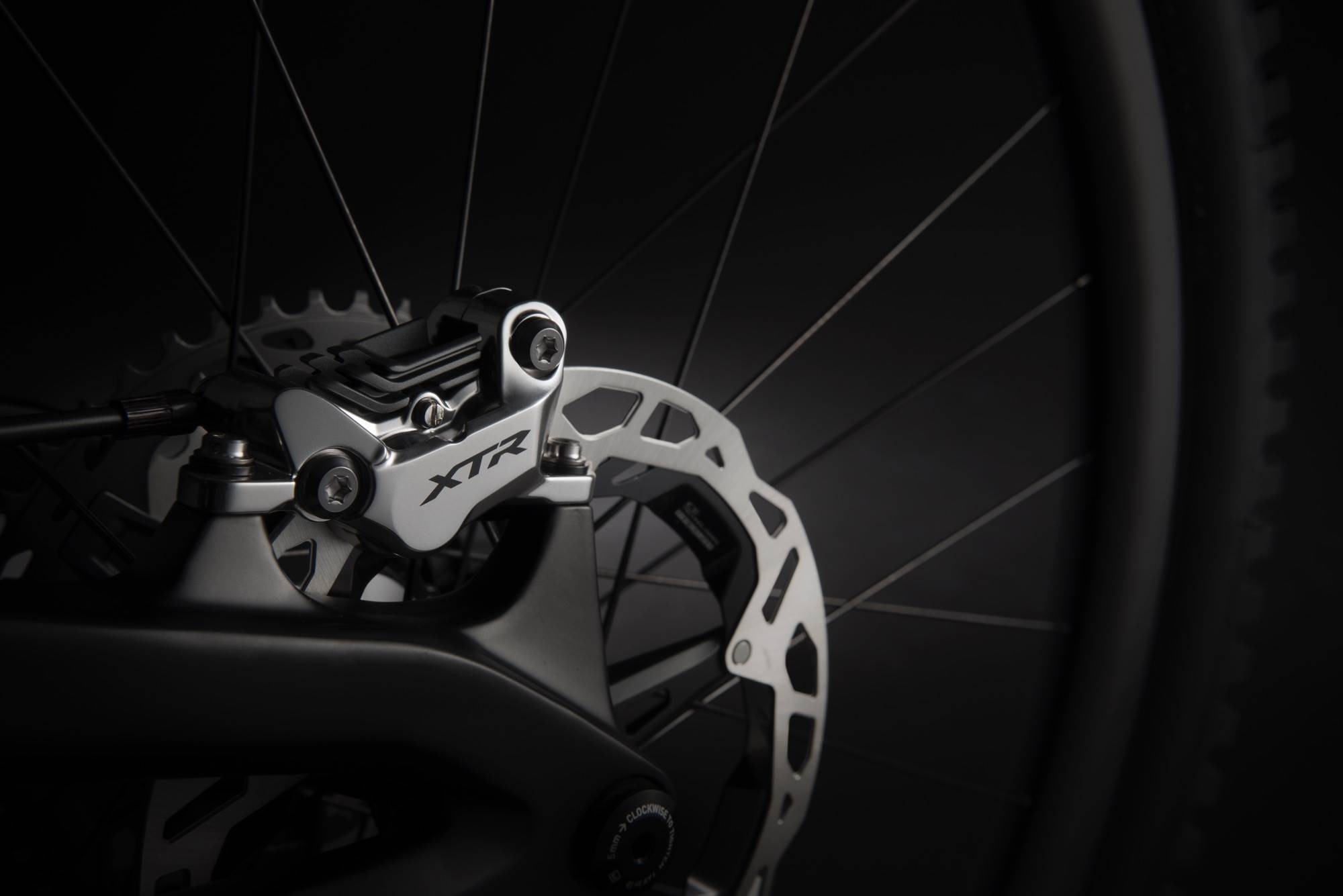
Why so many options?
That's easy. Shimano had already had their Race and Trail variants in XTR, predominantly focused on the brakes and cranks, and of course pedals. But the demands of Enduro racing compared to cross-country and marathon racing are vastly different. One group set cannot suit an EWS racer the same way it would suit a World Cup XCO racer.
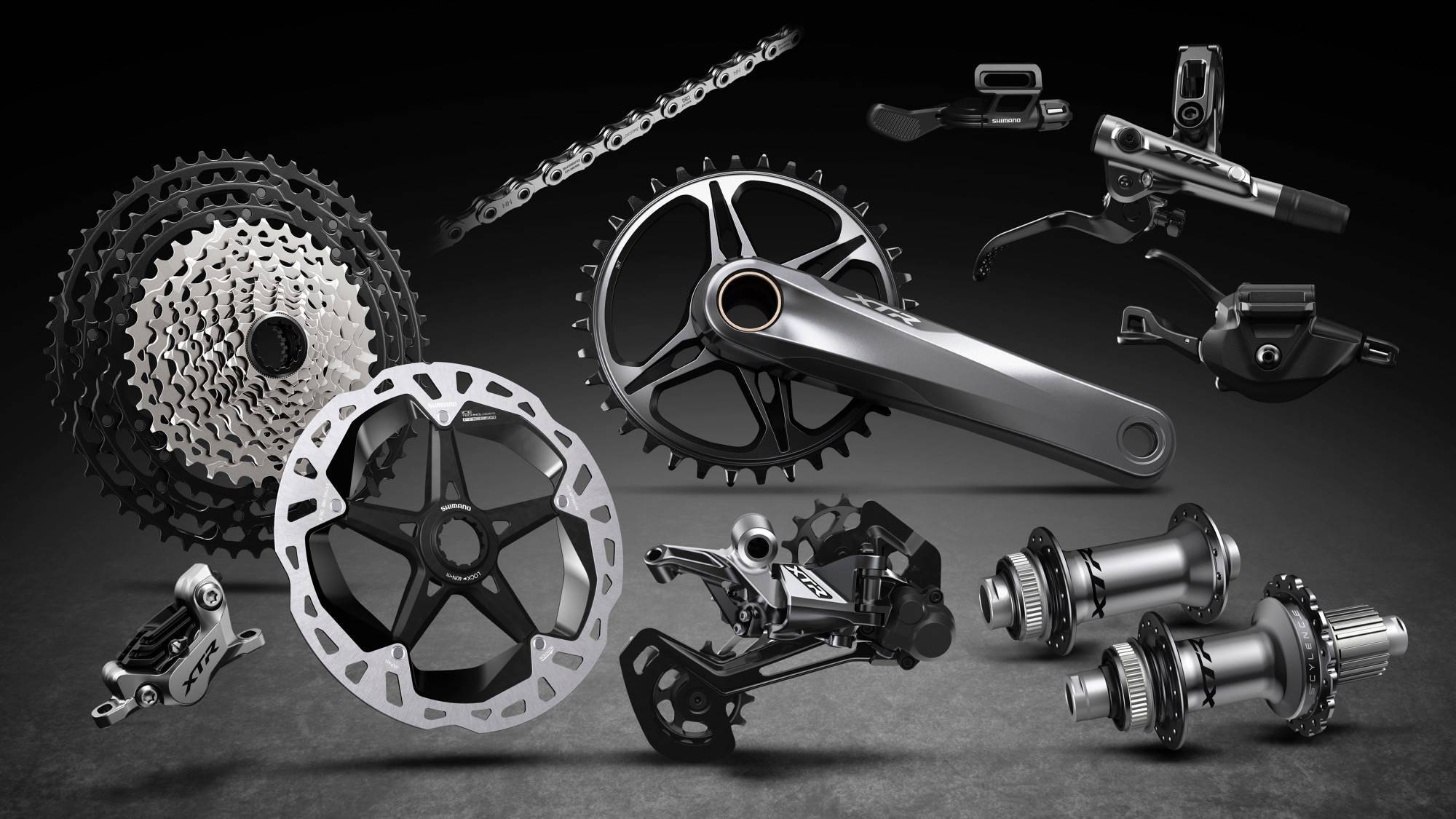
Shimano knew that Enduro racers need durability and chain retention, and serious braking power. XC riders need the range, the lightest weight possible, and yeah, chain retention as well.
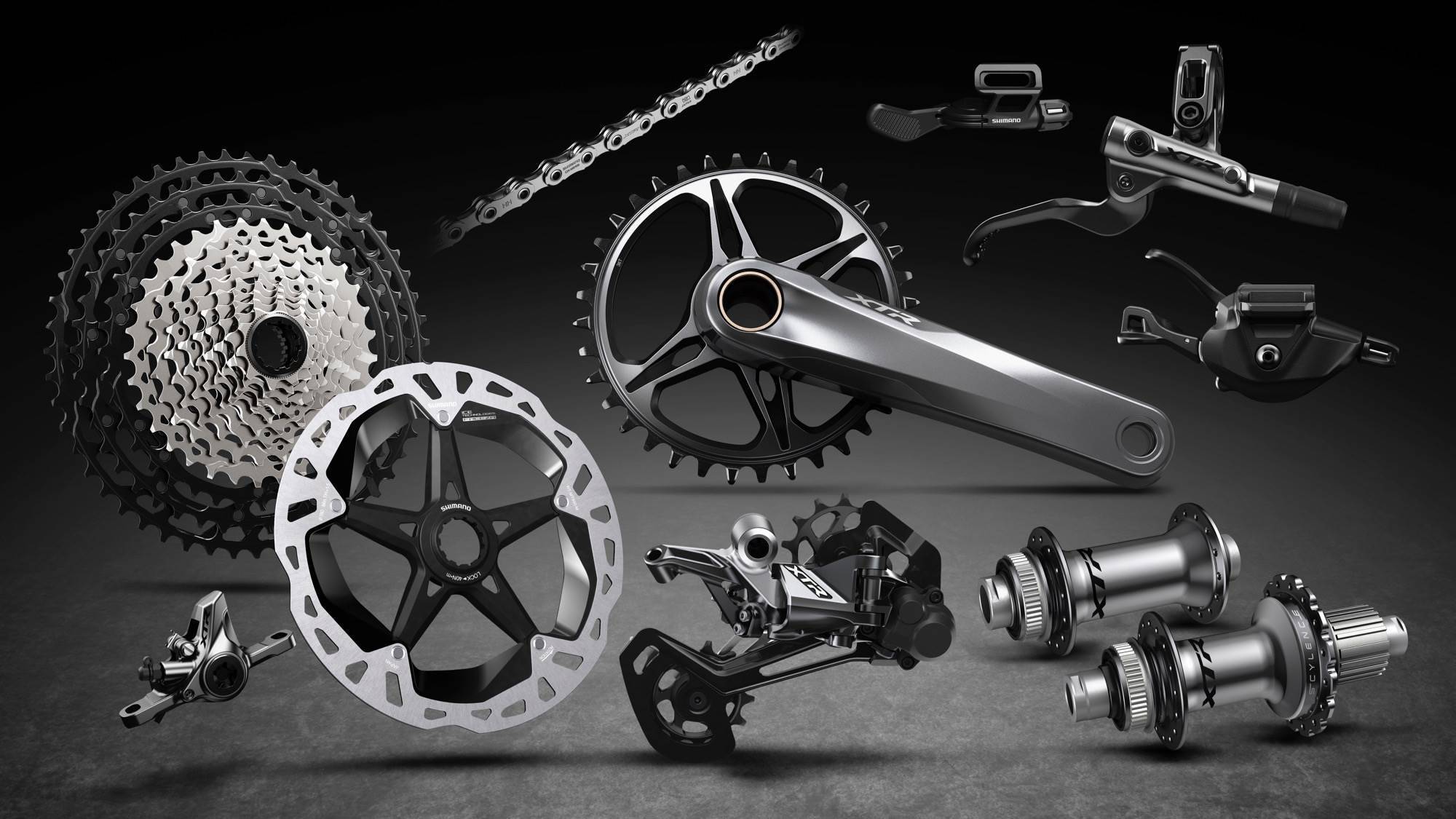
There is also a 1×11 Enduro group set option that uses a 10-45 cassette, and a 2×12 Marathon group set that uses the 12 speed 10-45 cassette along with a 28/38 chainring combination. More on these options later!
Introducing Hyperglide+
In 1976 Shimano introfuced Uniglide, helping chains shift across sprockets faster and more smoothly. In 1988 they brought out Hyperglide, which was 7sp and ended up as 11sp, with shift ramps and chains with champfers to assist with shifting under load. Now, they present Hyperglide+ and the chain looks totally different, along with the cassette and chainring teeth.
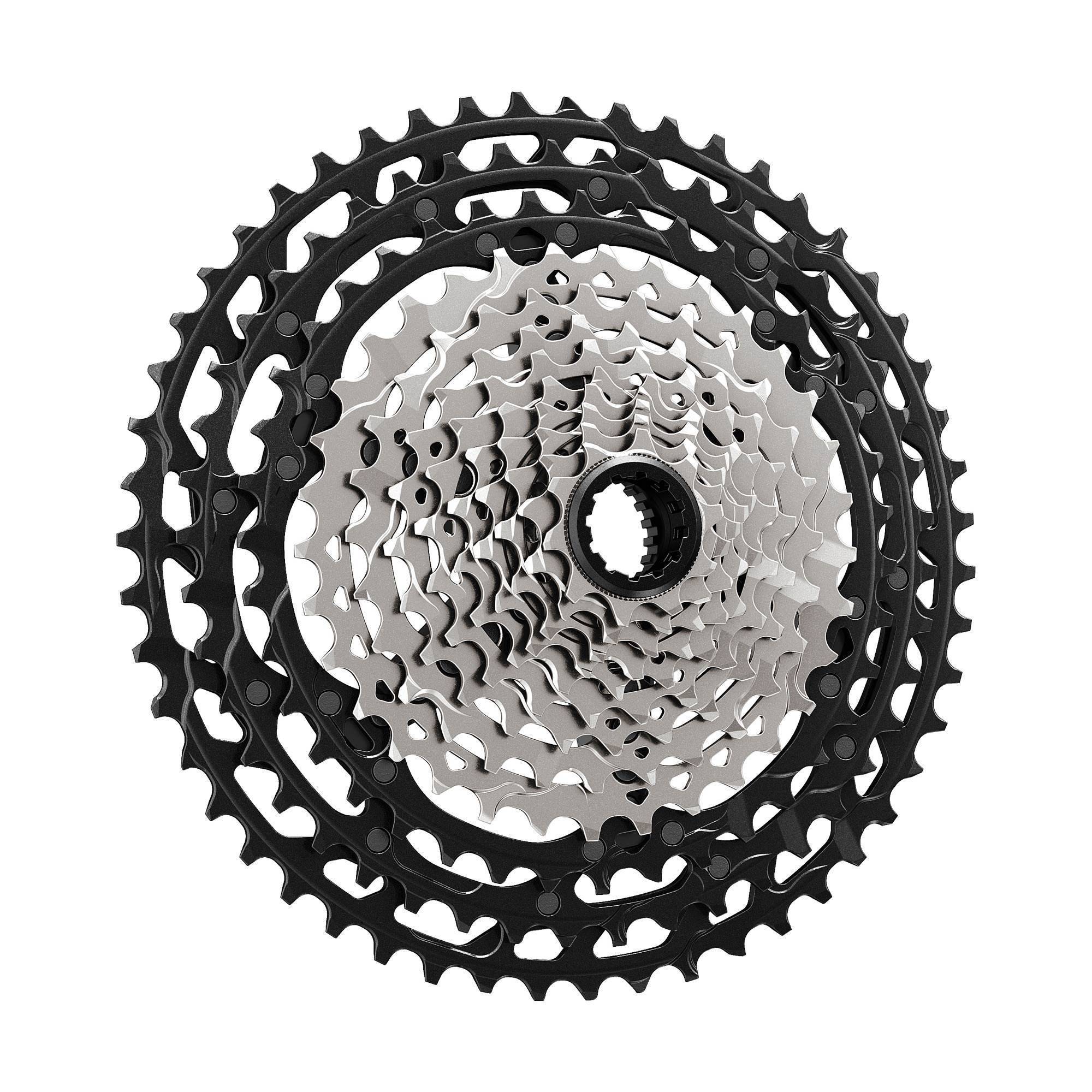
But the chain is also made in unison with the chainrings and cassette too, as the rollers are a totally new shape as they maintain more contact with the ring or sprocket, and allow a much faster shift at lower effort, and stay pretty much glued to your chainring.
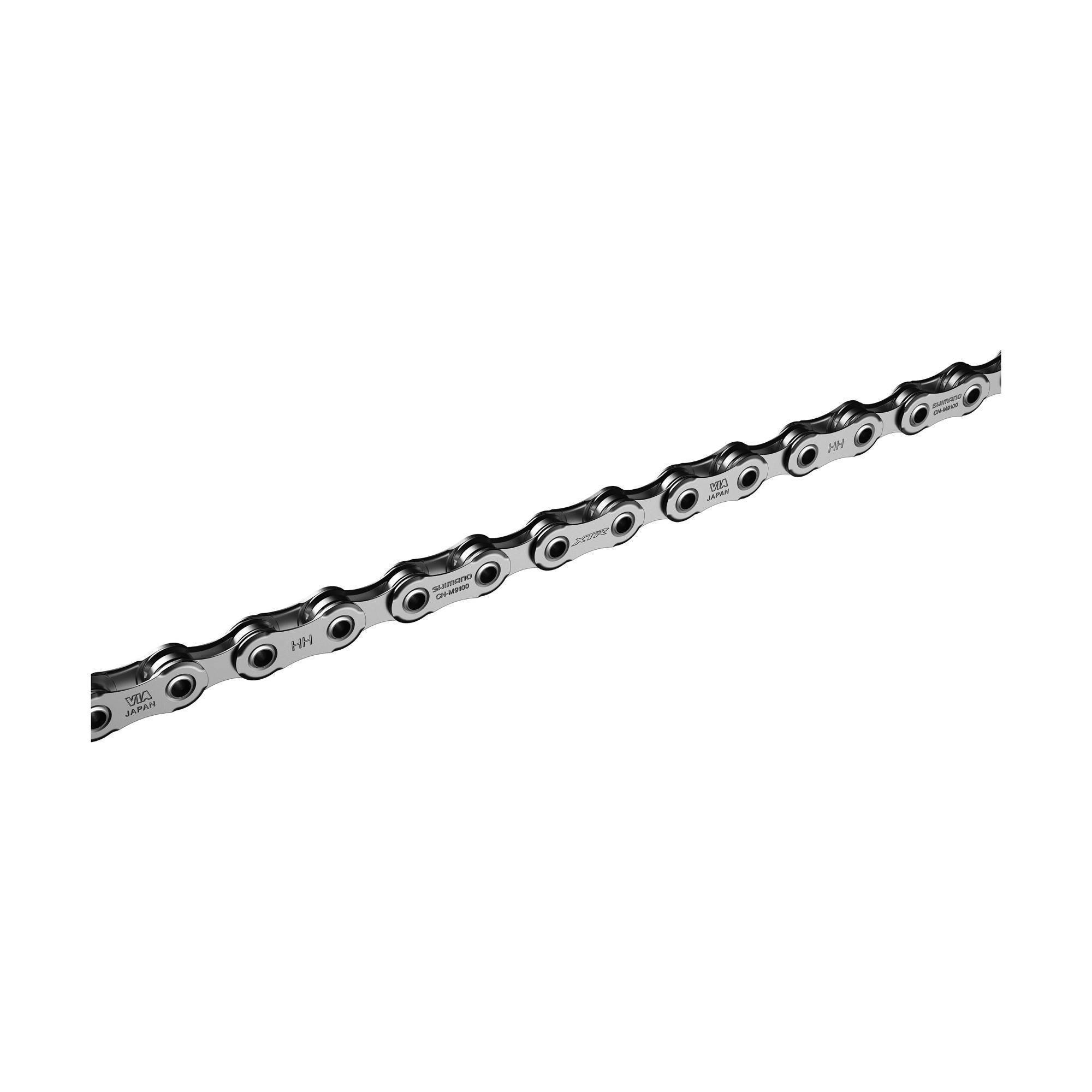
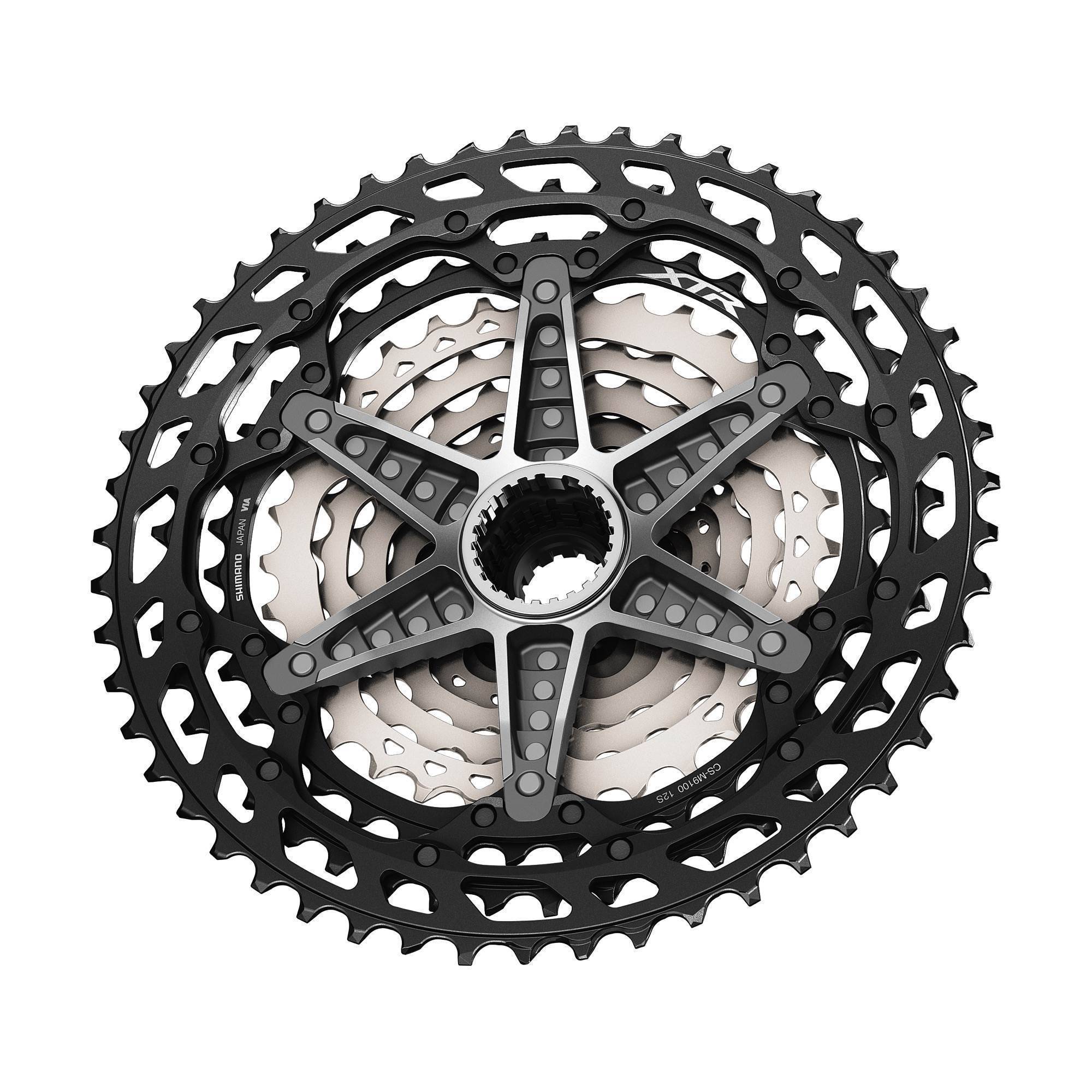
The new cassette, like the rest of the group, is a ground up redesign, based on a new freehub standard. Shimano can now have a 10t small sprocket, and offer three cassettes, with the 10-45, 10-51 for those who want the most range, and a 10-45 11-speed option for the M9100 1×11 group set and it’s specific hub.
The top 4 sprockets are steel where the load is spread on less teeth, then the middle are Titanium and the top are alloy. This goes a long way to keeping weight at a crazily low 360. Consider that’s about 100g lighter than the XT 11-46 with way more range and it’s a serious saving. XTR cassettes have never been cheap but these will only be about 5-10% more expensive than the current M9000 11-40 cassettes.
So why 3 options? Well 10-45 is a big range, and the 10-51 requires a long cage derailleur which gives up some ground clearance. So the options for either one are there.
New XTR M9100 cranks
These look schmick! The M9100 cranks have Race and Enduro options, and Shimano have moved to a direct mount chain ring which dumps some weight. They also have 30-38t chainring sizes. The Race cranks are 498 which saves about 100g over the current M9000 cranks.
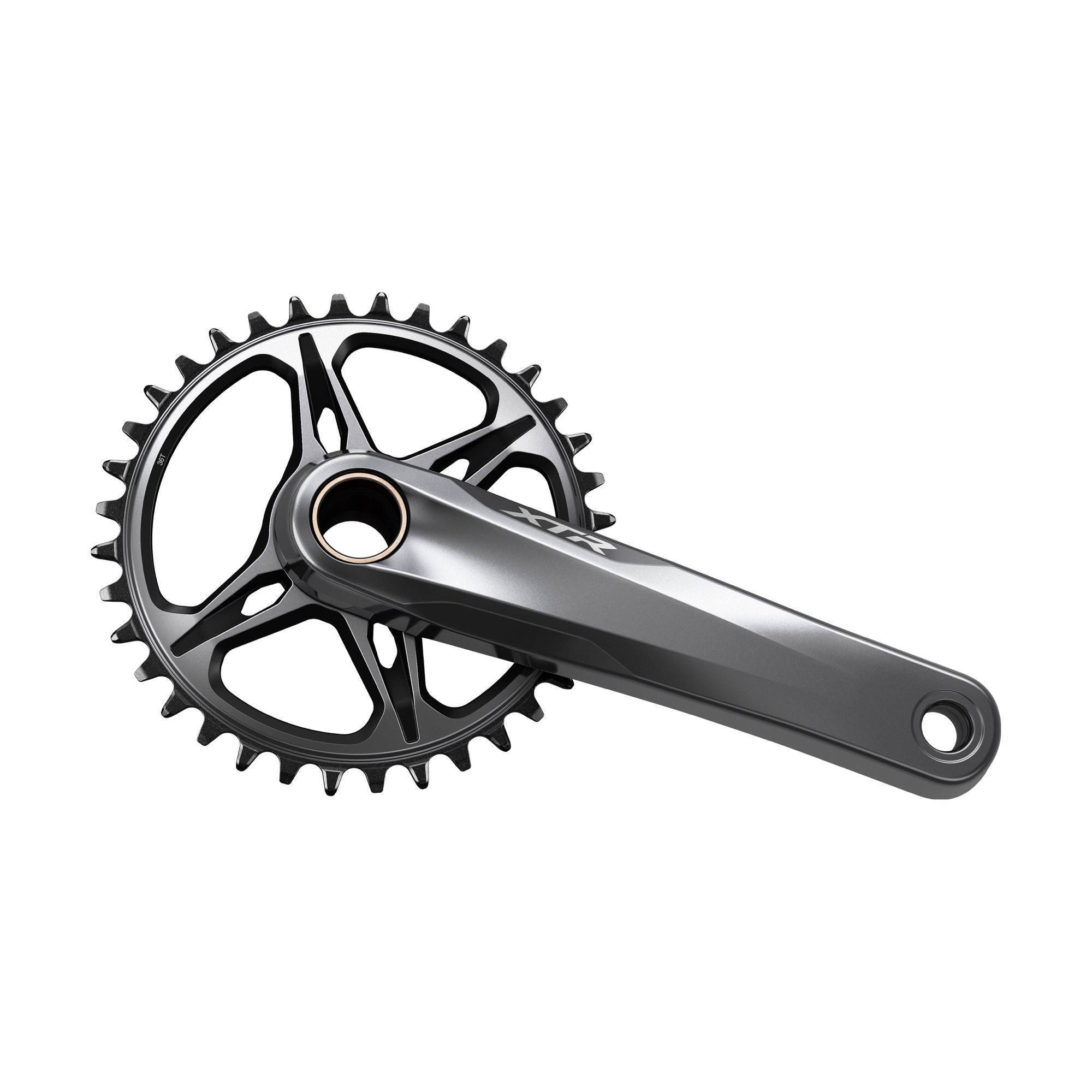
There is an increase in Q-Factor, as bikes can’t eep getting wider (Boost, etc) without doing so.162mm is the new minimum, it’s an increase of 4mm.
Mounting is new, with a bearing preload cap on the non-drive side crank and an 8mm bolt to attach the cranks.
The Enduro cranks are stiffer and stronger, and the Marathon cranks are the Race crank with the 28/38 chainrings fitted. There is just one front derailleur for them, in the three main direct mount SideSwing models.
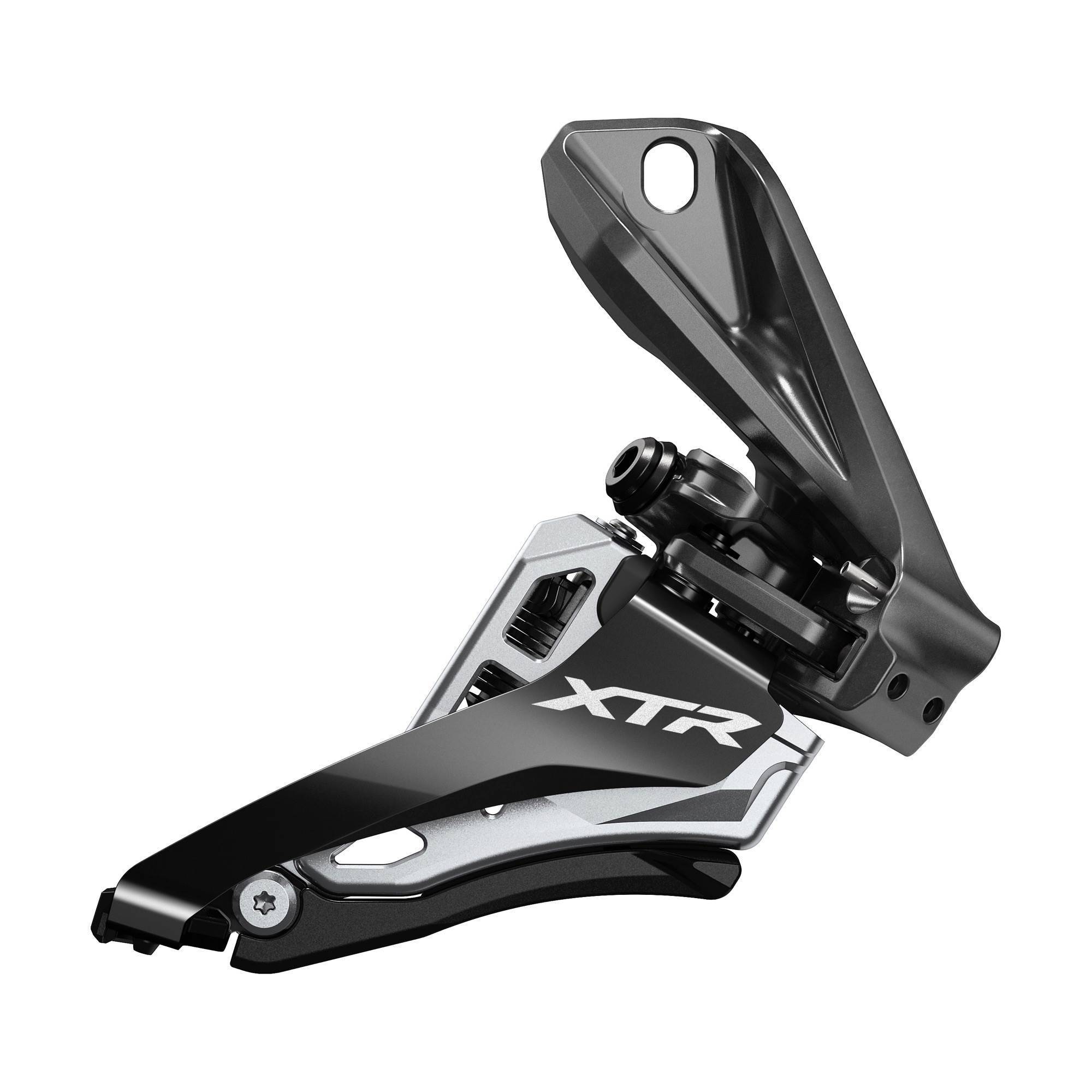
A tale of three derailleurs
There are three rear derailleurs, a M9100-SGS (long cage) for the the 10-51t system, and the M9100-GS for the 10-45 cassettes. This one has 28mm better ground clearance. Then there is the M9120-SGS for the 2x system.
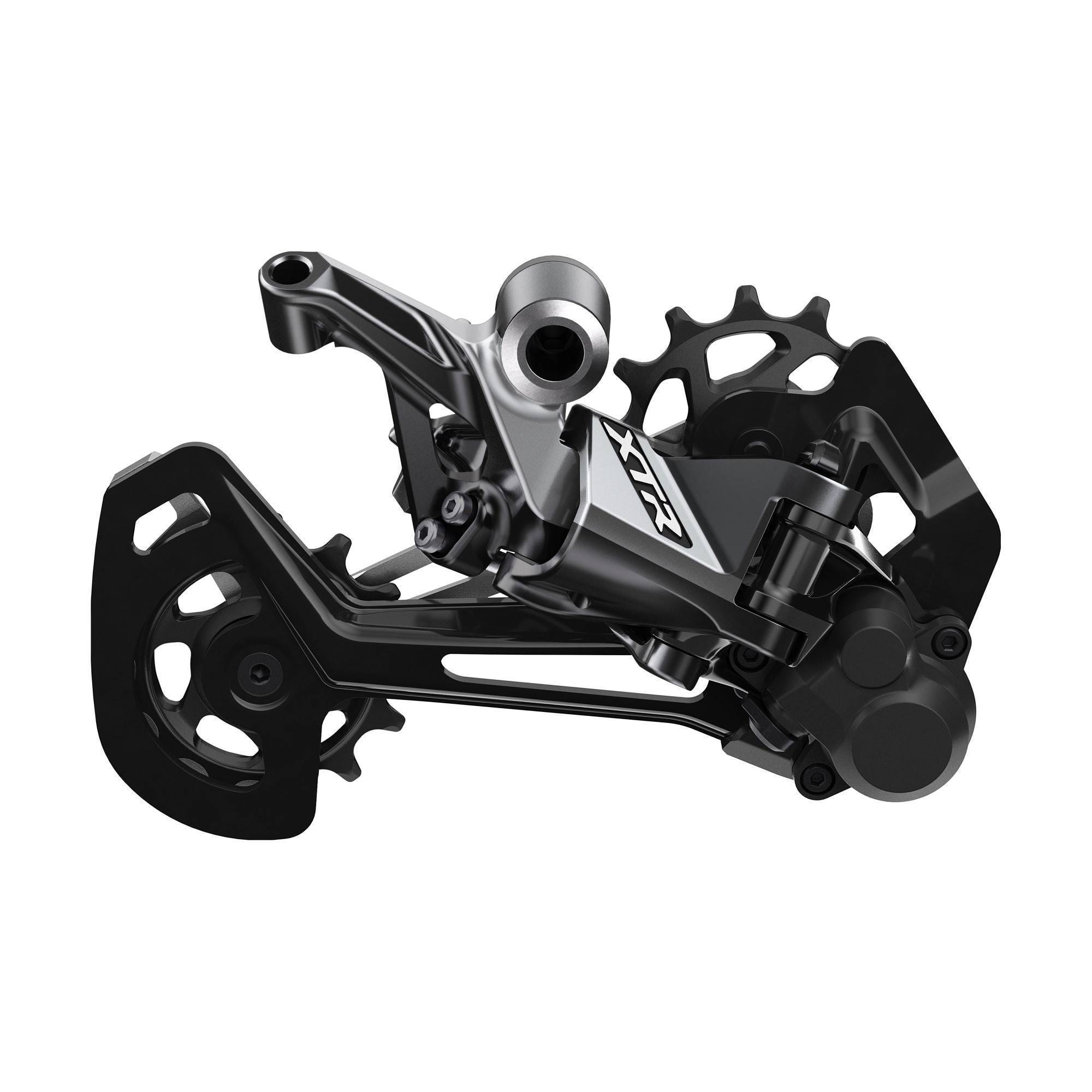
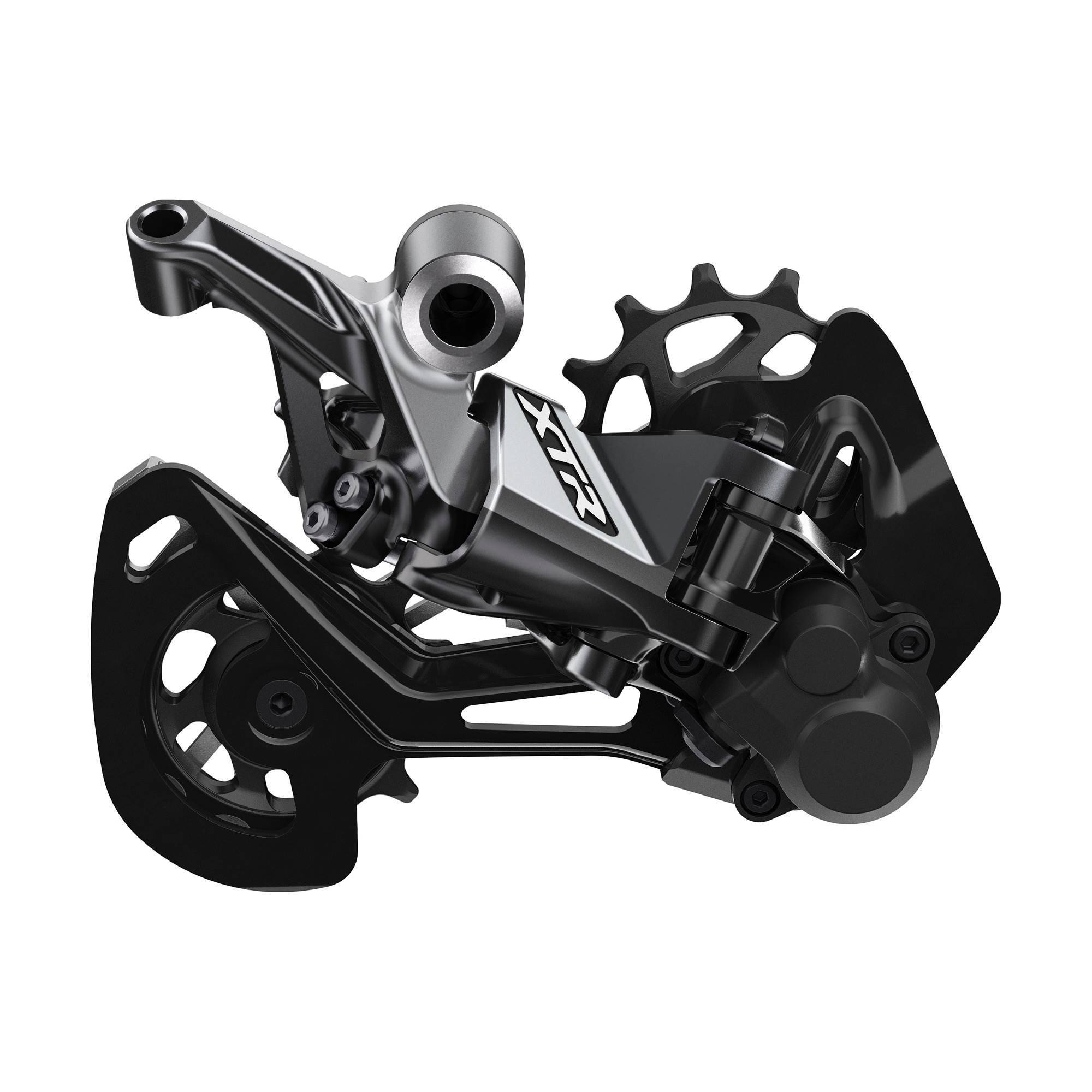
As chain security is key, there are also resin front chain guides for ISCG05 (no bash guard) Direct mount and E-type. They’ll suit the 30-38t chainrings.
The rotors have been updated with what Shimano learned from the road discs, and while the 140 and 160mm drop a little bit of weight, the big difference is how they cool down faster than the previous models.
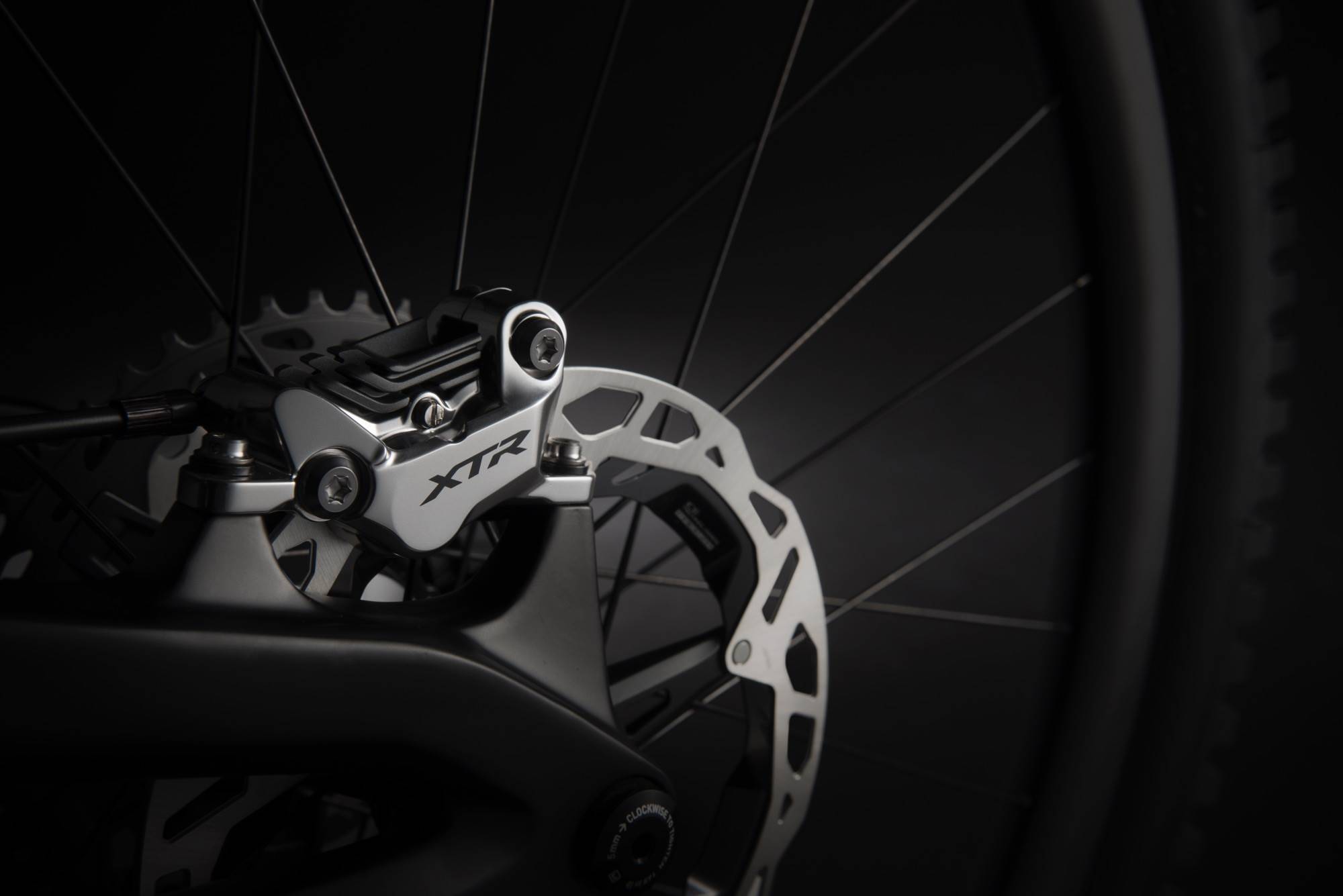
The calipers are new, with the Race dropping some weight by having no banjo (so the hose goes directly into the caliper) and the Enduro beefing up to a 4-piston brake with new pads.
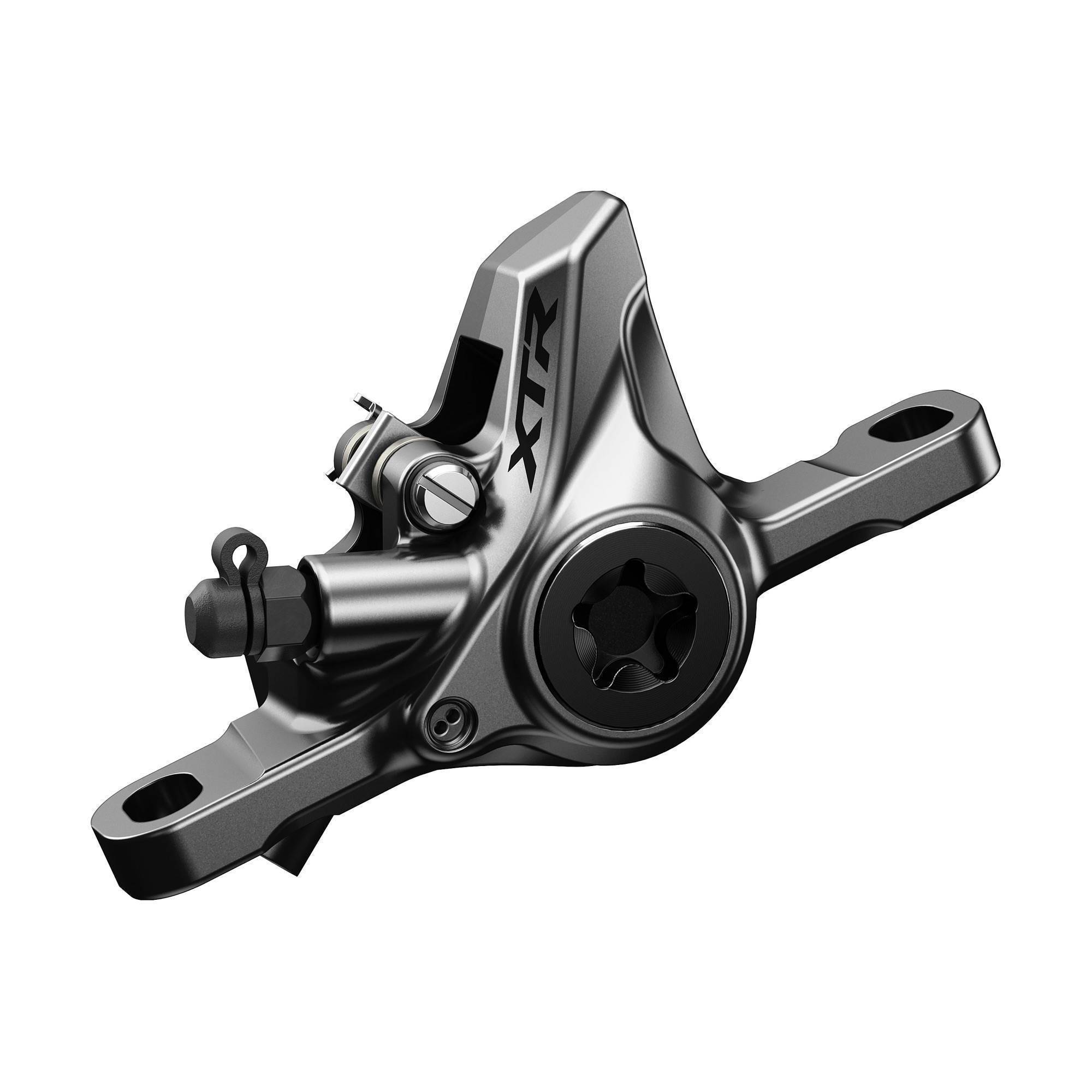
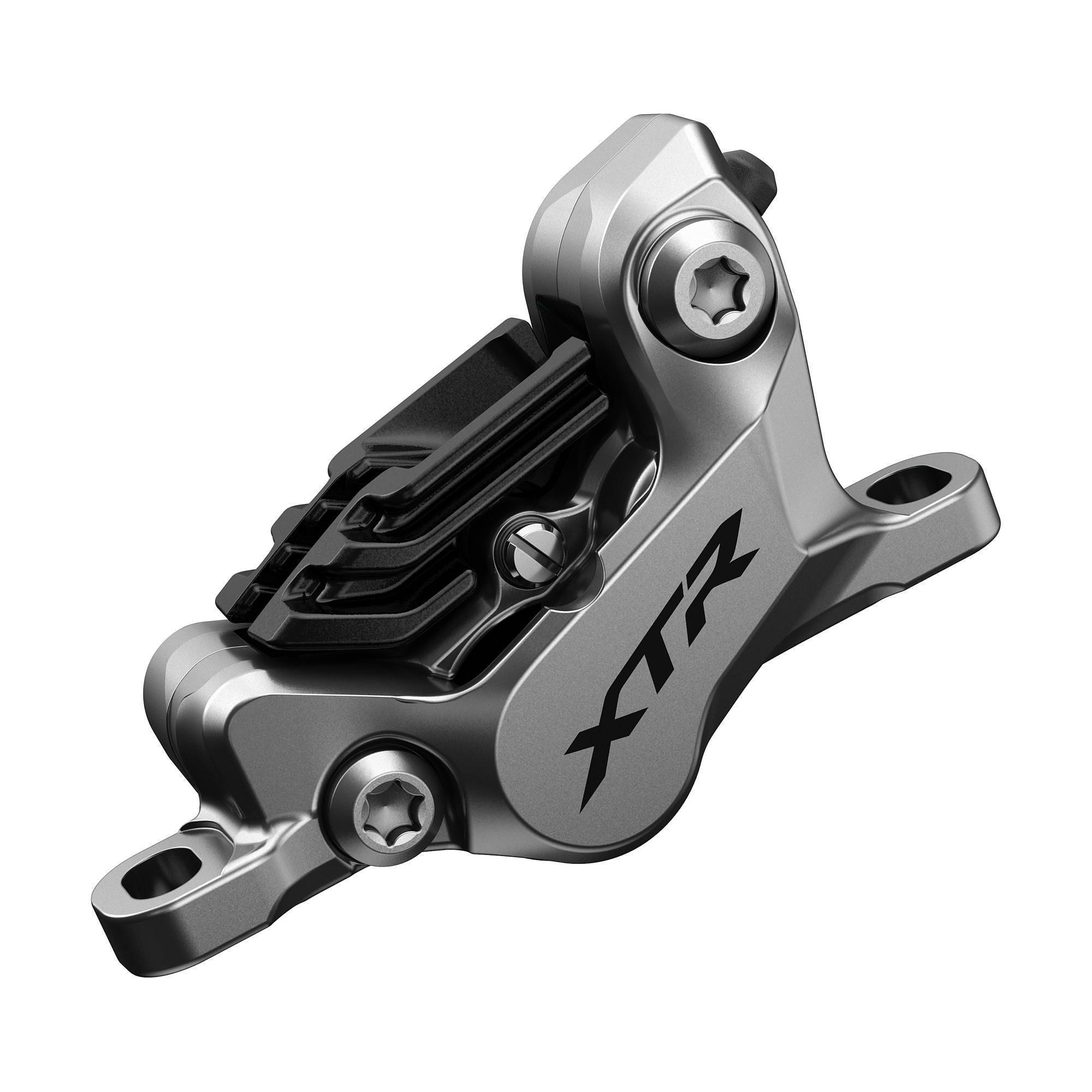
The levers are new too – and it’s a pretty radical change. The bar clamps have moved a long way inboard to pretty much where the flex point was under hard braking. With a secondary contact with the bars Shimano claim they have made the levers dramatically stiffer.
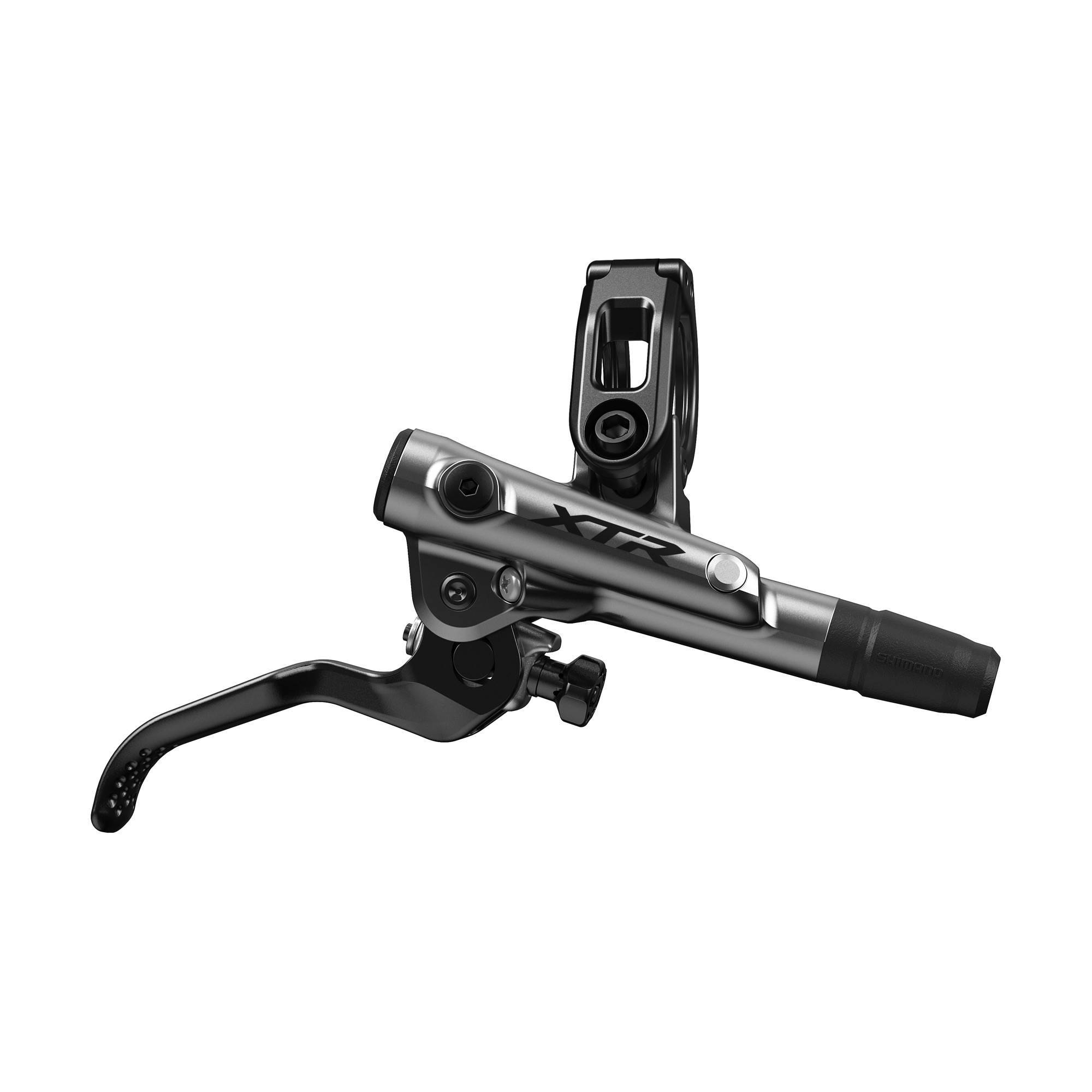
The XTR Enduro lever has ServoWave and tool free reach adjustment, much like the XTR trail brakes did. Those new calipers just help deliver heaps more power!
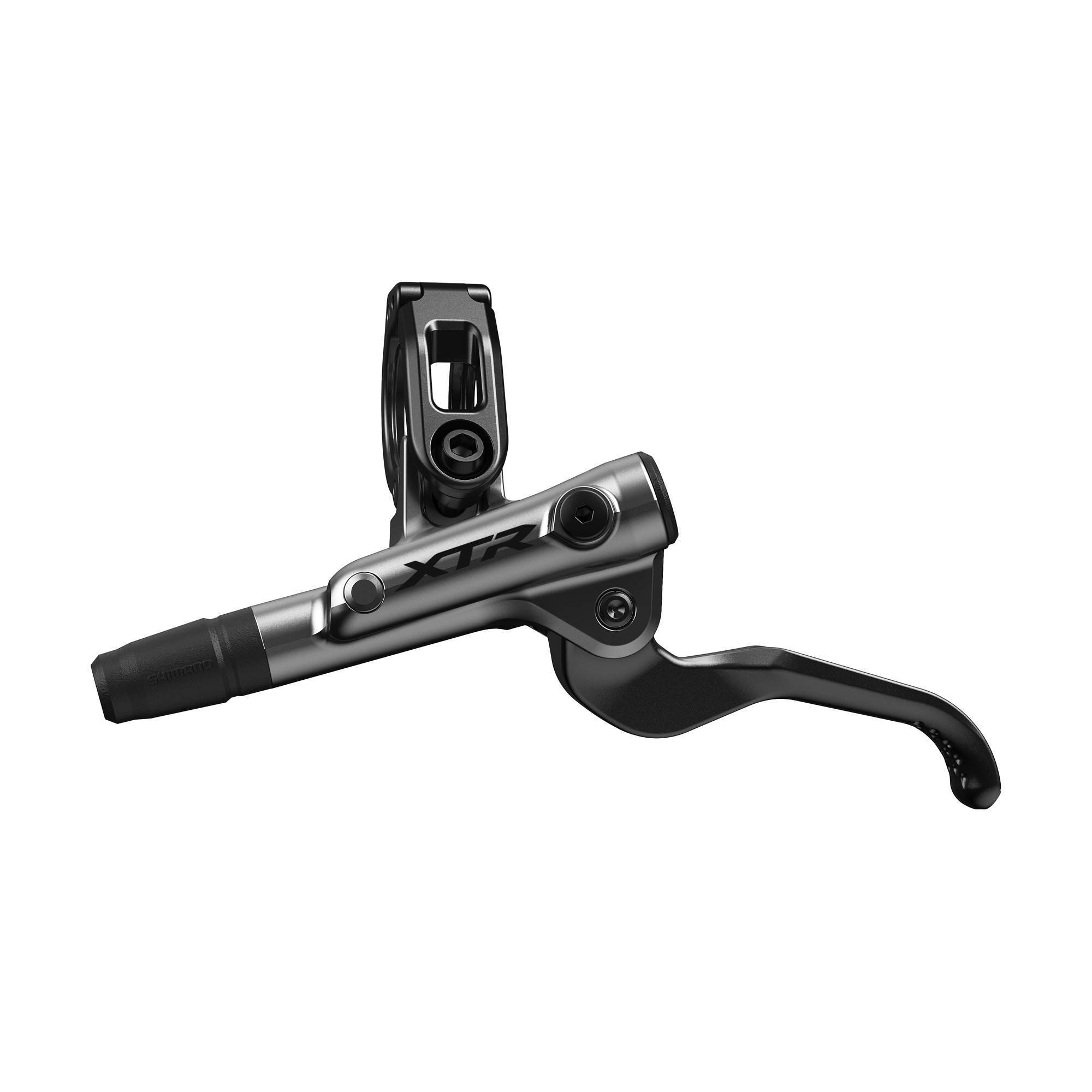
The XTR Race lever has the new mount, but is pared down to stay light. Combined with a new rotor design that assists in brake cooling thanks to new construction, the new brakes are stronger and more suited to their designated performances than before. And when Shimano are known for top-notch brakes, that is saying something.
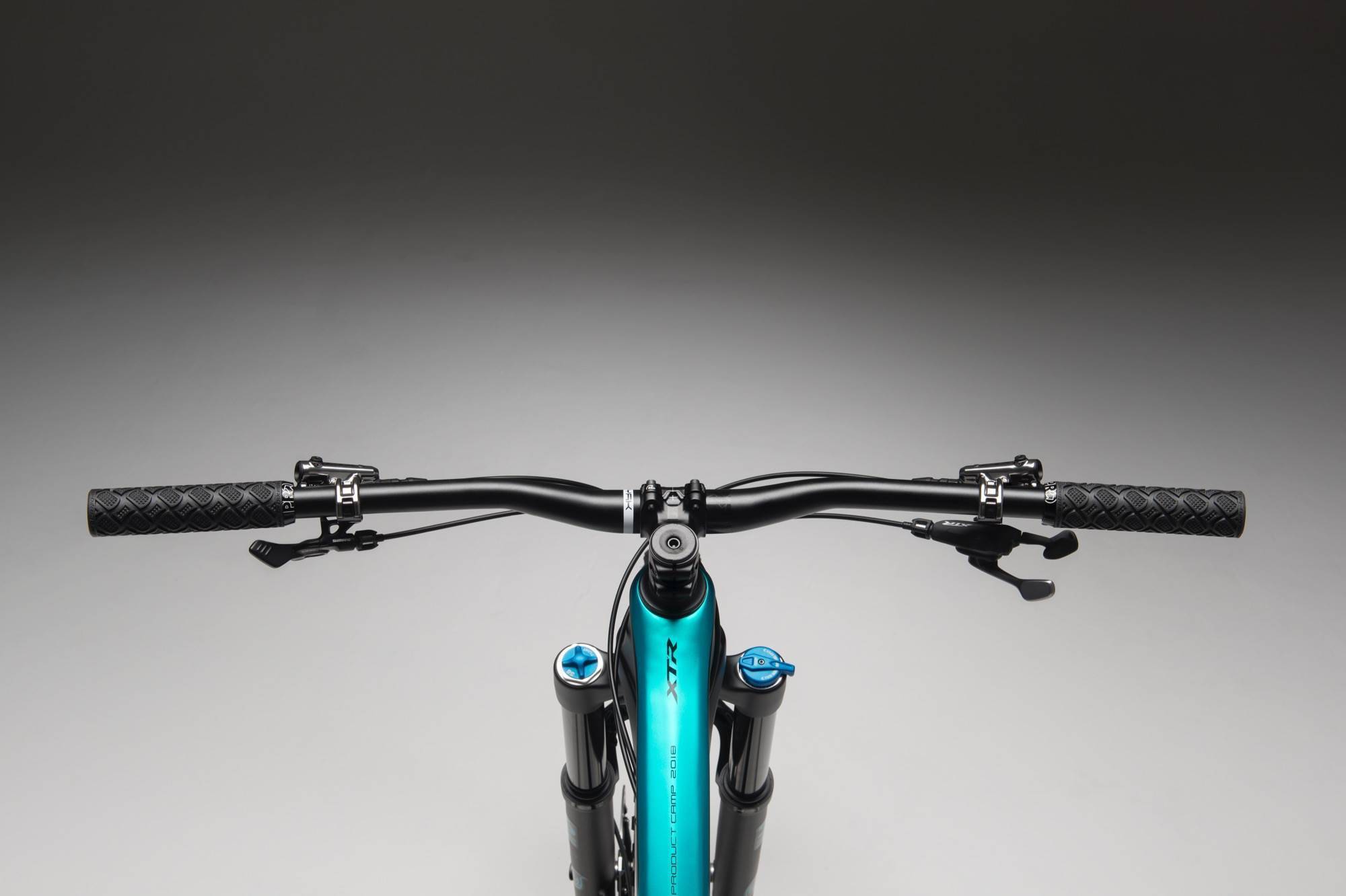
Ergonomics with Shimano XTR M9100
The big news here is a new iSpec EV mount, which you can spot with the brake levers. With the ability to have the shifter rotate 60 degrees, and move in or outboard by 14mm, you can really get your brakes AND shifter exactly where you want them.
The shifters are still RapidFire but with a lighter action thanks mostly to a new outer and faster shift speed. The left hand shifter has been shrunk to a single lever item for the 2x group set. Both shifters are available in iSpecEV or bar mount options.
But there is also a dropper post lever for iSpecEV! It will work with any dropper that needs 7mm of cable pull, but it helps add seamless integration for any of the group sets. PRO will expand their Koryak range of droppers with more drops and diameters to suit.
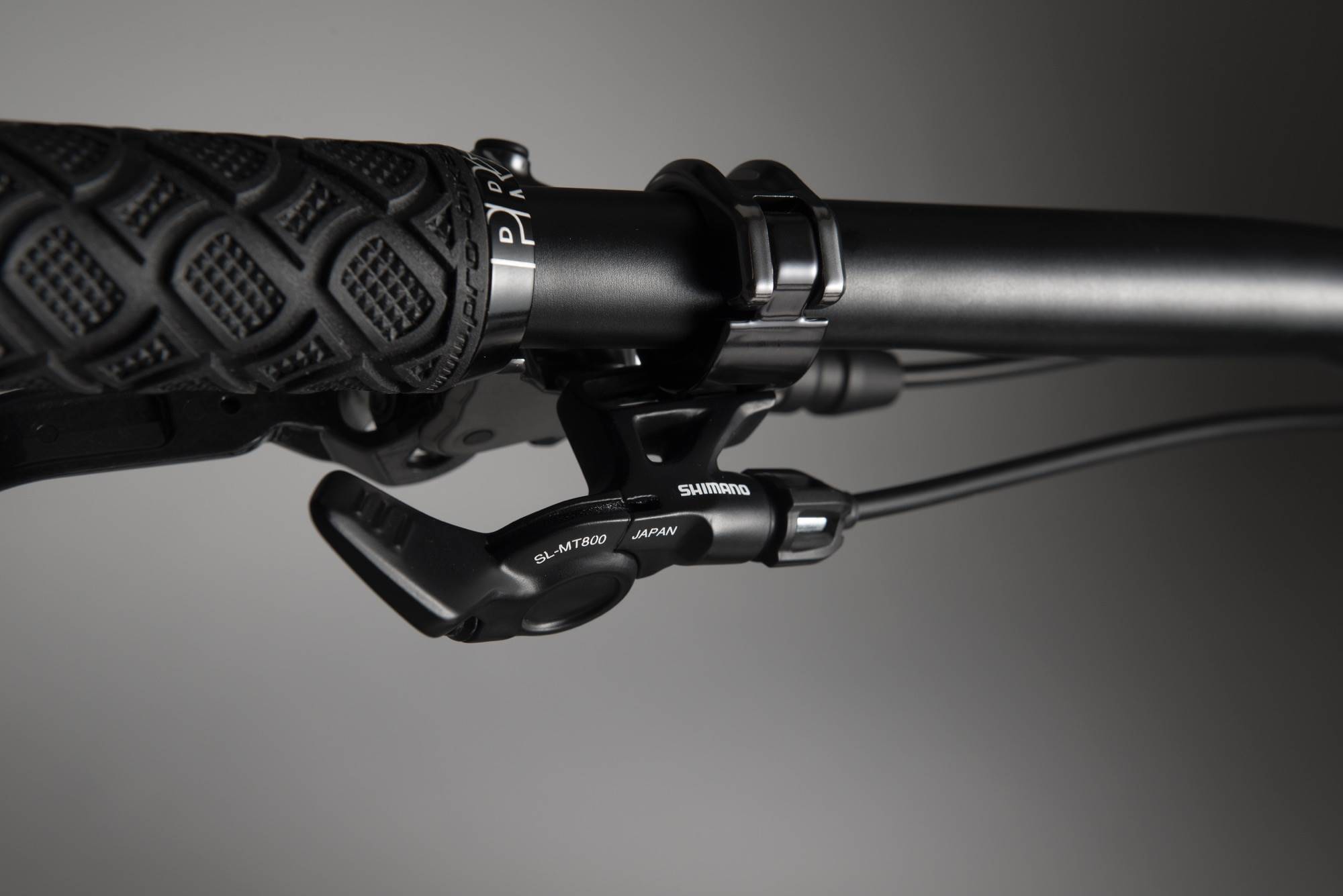
With a combination of lower shift force, ergonomics to suit more people, and faster acting brakes with less flex Shimano have ensure that the contact points with XTR mean you pay less attention to what they are doing and more to what you are doing. Which is exactly what you want in a race group set.
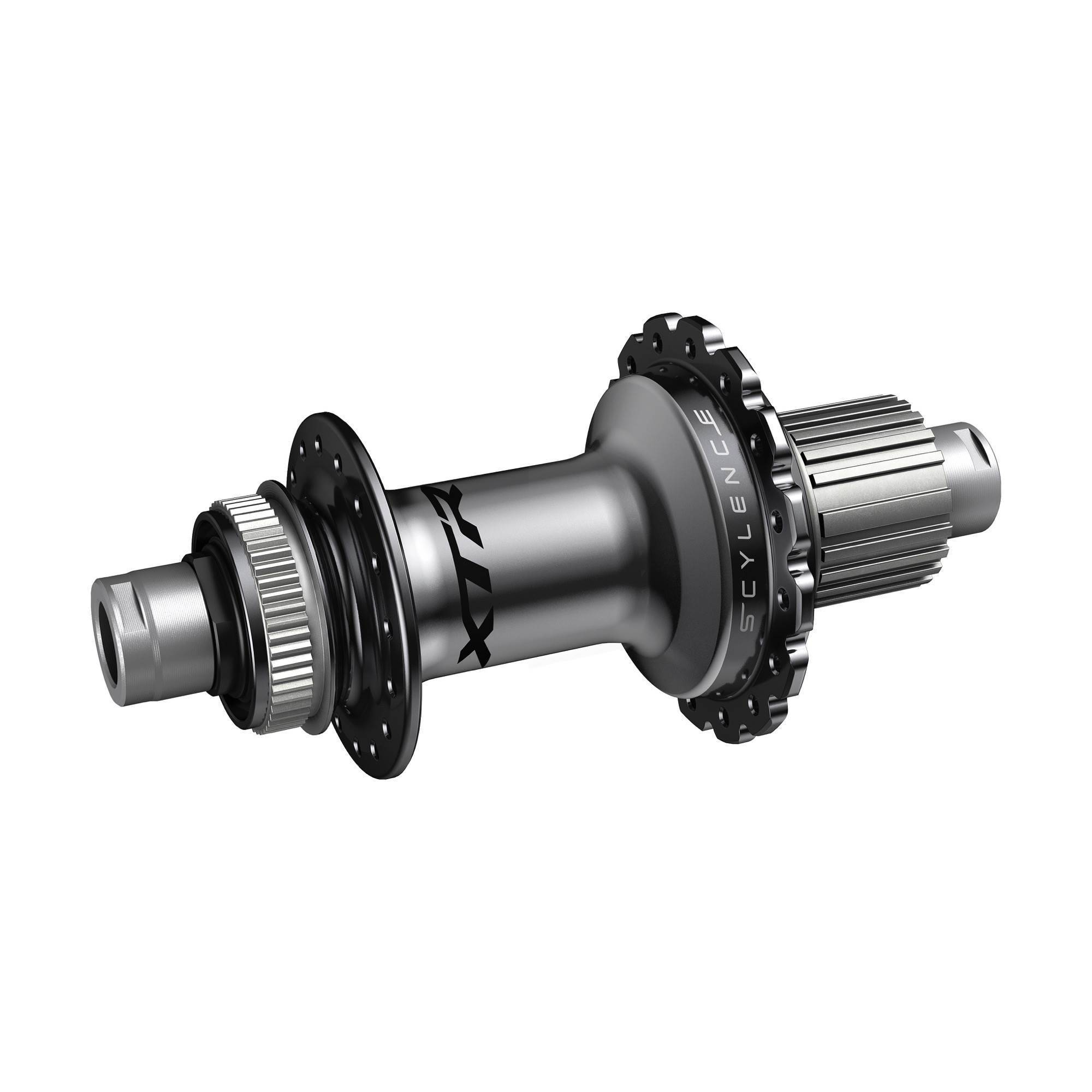
Rolling stock for Shimano XTR M9100
A new cassette (and everything else) needed a new freehub standard called Micro Spline, and Shimano created the Scylence technology for the internals. It’s an all new freehub spline design with an alloy body. But the hub engagement inside is super cool. Gone are the pawls, replaced by a system that engages when pedalling but disengages completely and runs near silently when you’re coasting. To us, this sounds like it should also have far less resistance as well. Imagine something not crazily different to the DT Swiss Star Ratchet, but where one sits inside the other, as opposed to next to each other.
The engagement has 360 degrees of contact which is perfect for the high loads, and means there is no dead point. Shimano say that means there is 7.6 degrees of rotation before engaging. That’s pretty quick!
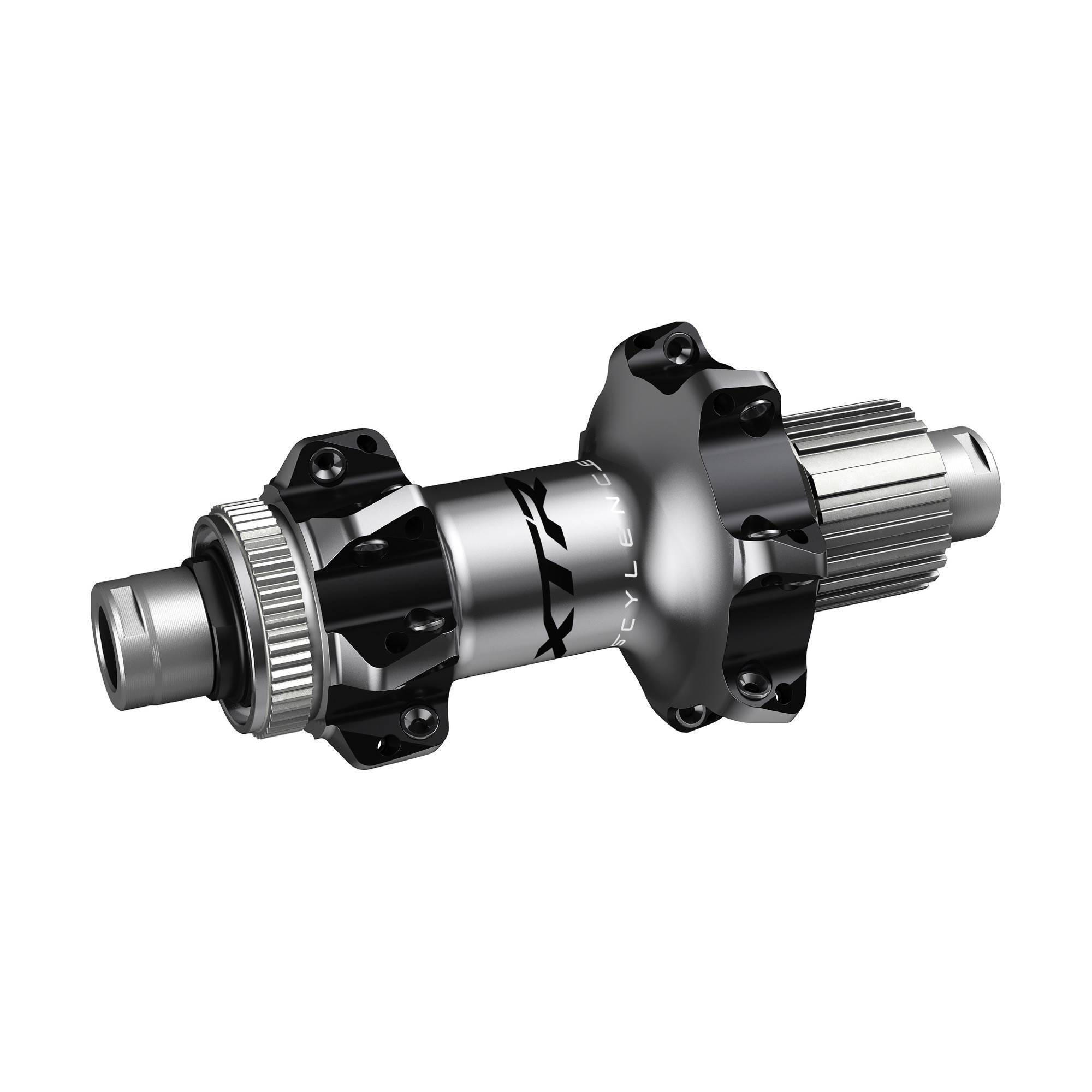
The hubs come in normal J-bend spoke flanges and also models for straight pull. The husb are all built for centrelock rotors (and XTR rotors are only made in centrelock) and come in 100×15 and 110×15 for the front, and 142×12 and 148×12 in the back. What’s special is the rear hub for the M9120 11-speed option with the wider flange spacing thanks to the narrower freehub. Essentially this gives the benefits of Super Boost spacing without needing a new frame. We’ll be interested to see who uses this system, especially amongst the top tier of Shimano athletes, as there is some very real advantages to the stronger rear wheel.
The hubs are a little lighter, and Shimano aren’t making XTR wheel sets – build the hubs onto what you want, as long as it is 28 or 32 spokes.
The Micro Spline has also been licenced to DT Swiss for their hubs, but no one else. As yet.
Put the power down
There are new pedals as well, in Race and Enduro models. The big difference here is the Race pedals will have a model that has a 4mm narrower Q Factor. So this reverses the changes with the cranks but then it might not work with some bikes or big feet for heel clearance. As XTR is a high end product though, it’s great to see this option for fine tuning fit and ergonomics.
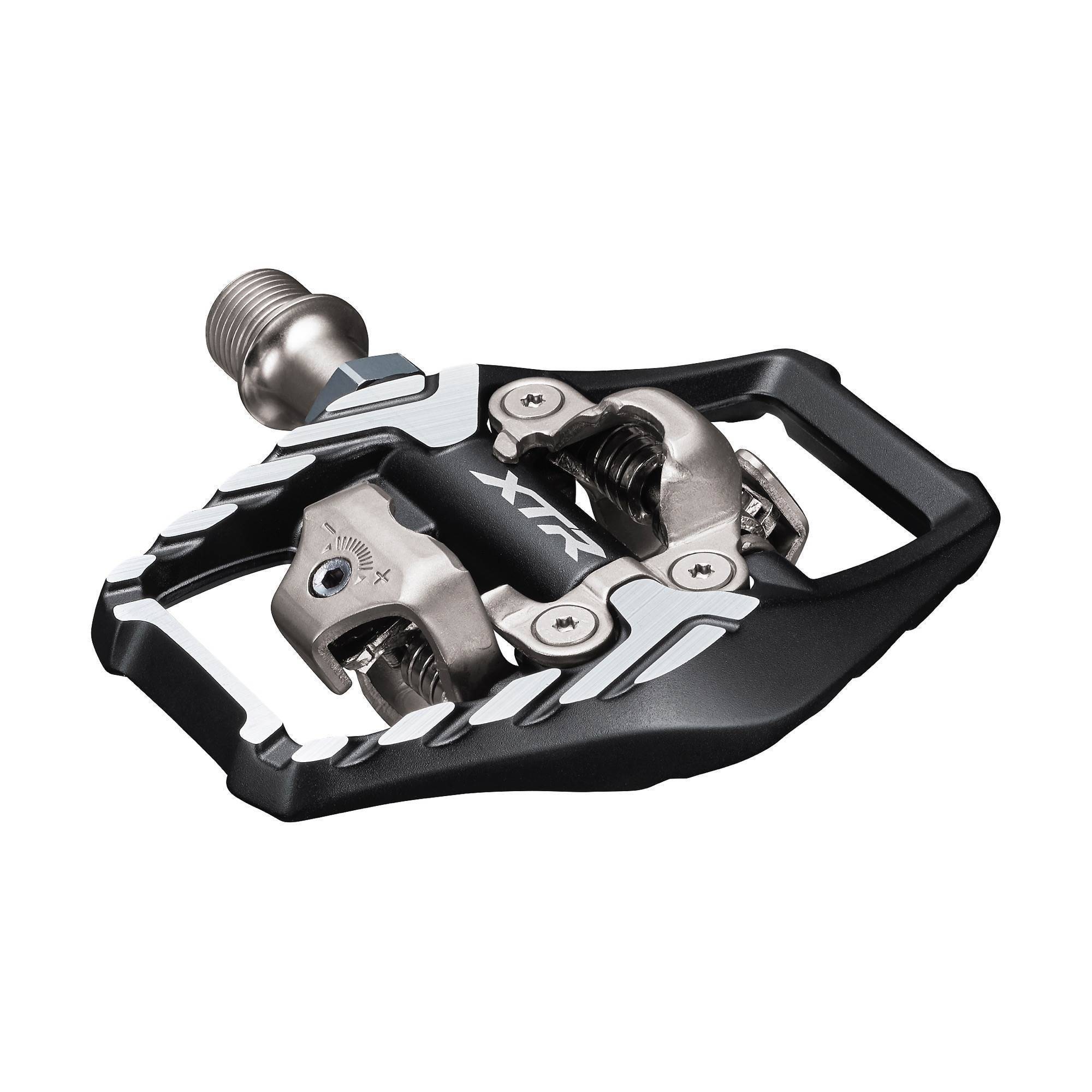
Our thoughts on Shimano’s XTR M9100
Well, we haven’t seen it or touched it. But M9000 was a great group set with the slickest shift to date, and we are told that M9100 is truly next level. And so it should be. Mountain biking has changed a lot since 2014 when the last iteration of XTR was introduced, and SRAM’s Eagle group set really hit us with a huge offering for gear range.
Shimano have answered the 1x gear range needs, but not foresaken the needs of racers who don’t always need the spread, but they need reliability, low weight and performance. The new XTR 1×12 comes in at 2505g, which saves 133g off the previous group and about 17g off SRAM Eagle XX1 with DUB cranks.
When you look at the ergonomic changes, and the extras like the pedals, chain guides, dropper lever and new hubs, Shimano have developed a group set with options for a lot of serious bike riders. Some options will only truly be appreciated by elite racers. But you know what, you can buy what they use if you like. The options here can let you build the most high-performance XC bike, or the hardest hitting enduro bike, or maybe a super-light trail bike with range for days, silent rolling wheels and braking power to stop whenever you want. You decide, the options are there.
The one option that isn’t is Di2. But there is also no word that it is out of the question. So I guess we wait?
Stock should be arriving around August, but go see your Shimano dealer for details on specific dates and your requirements.
We’re waiting patiently until we can get our hands on a group set to build up and to see how well Shimano’s claims stack up. Given our experience with plenty of other XTR group sets – it’s likely to do just fine, and set a new benchmark.

